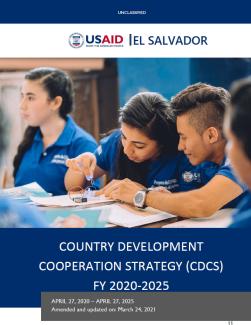El Salvador has a particularly deep, close, and multifaceted relationship with the United States. Approximately 25 percent of Salvadorans live abroad, and most of these reside in the U.S. In 2019, these residents sent more than $5.65 billion back to El Salvador, primarily to family members, representing nearly 21 percent of the country’s total GDP.1 These family ties can create a ‘pull factor’ for migration to the United States, but lack of economic opportunity and insecurity in El Salvador are often cited as the fundamental root causes of outward migration. Eighty-three percent of irregular migrants returning from the United States cite individually or a combination of: a lack of economic opportunities, insecurity, and a lack of government protections and services, as their main reasons for leaving El Salvador.2 In addition, El Salvador frequently experiences extreme climate events, such as flooding and drought, and natural disasters, such as earthquakes and tropical storms. These crises affect physical and human capital, have particular impacts on women and children, and further exacerbate internal displacement and both legal and irregular migration. Improved security, enhanced economic opportunity, and strengthened governance will therefore play a central role in responding to the needs of Salvadoran citizens, including the specific needs of women and youth, and in building resilience to the country’s vulnerabilities so that its citizens can prosper in their home communities.
The Government of El Salvador (GOES) administration has a five-year term (2019-2024) that corresponds to a majority of this 2020-2025 CDCS, and the strategy aligns directly with its proposed improvements in security, economic prosperity and governance. USAID/El Salvador has a notable window of opportunity to deepen partnerships with the GOES, municipalities, private sector, and civil society, and advance the country’s ability to reduce irregular migration. Furthermore, El Salvador’s scores on most development indicators measured by USAID’s FY 2020 Journey to Self-Reliance Roadmap hover just above or below global averages, meaning that well-planned interventions carried out with the political and financial support of the GOES and other partners will be well-positioned to have a meaningful, sustained impact in ways that further develop the country’s self-reliance.

